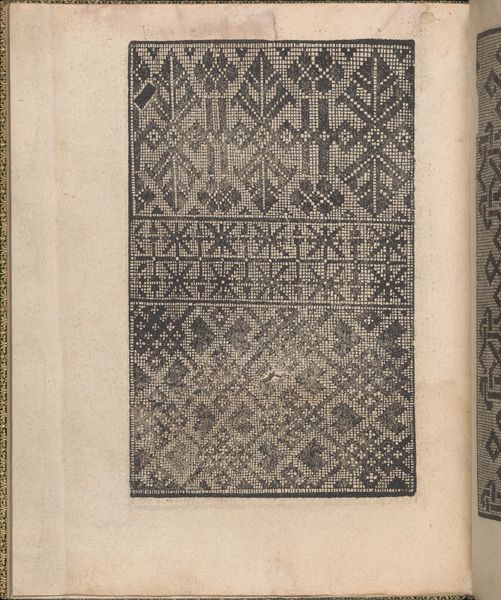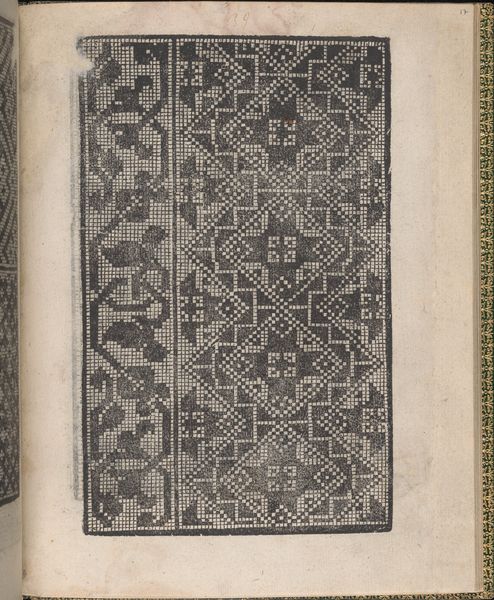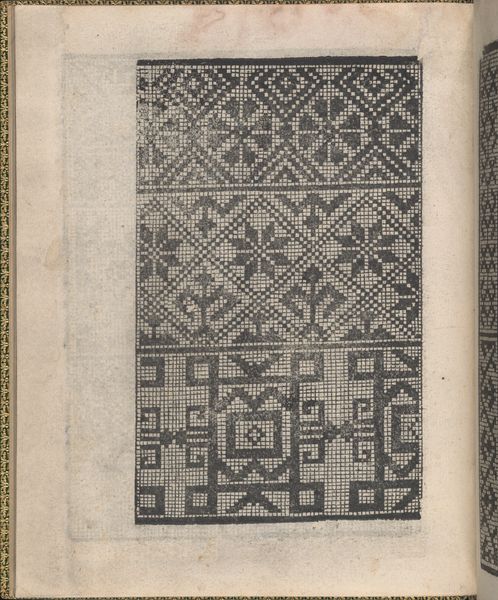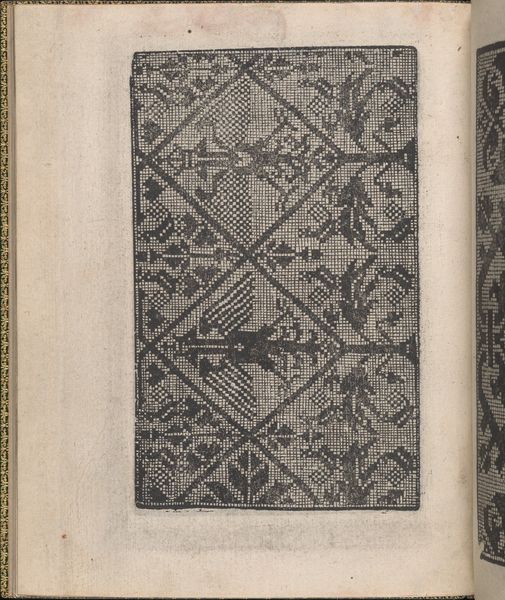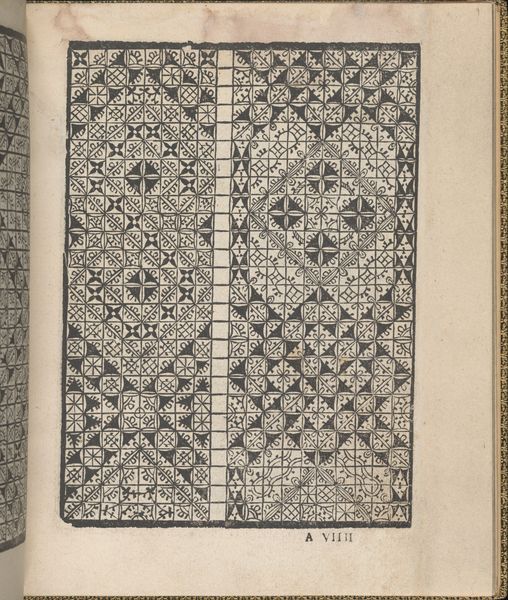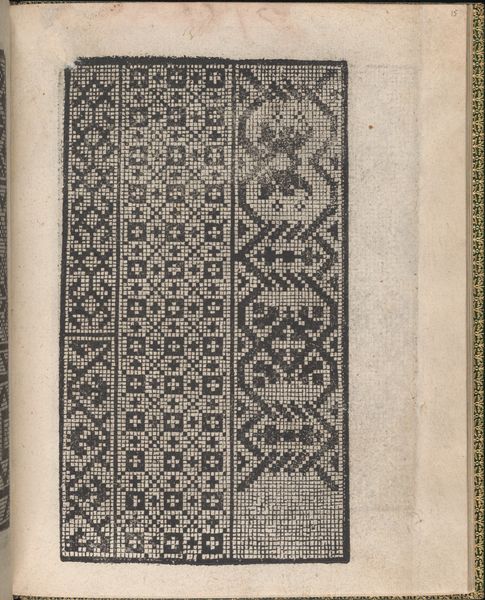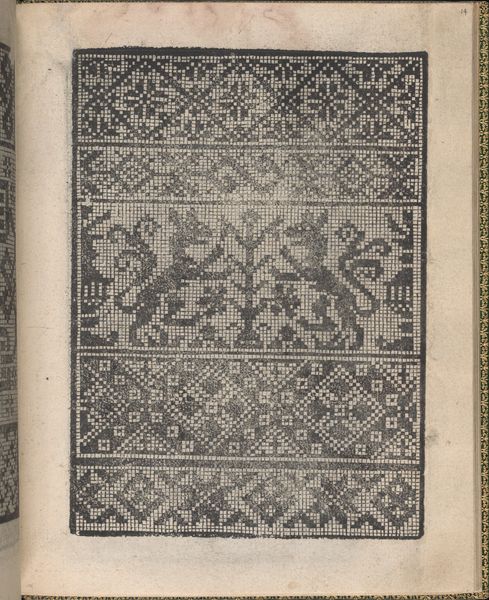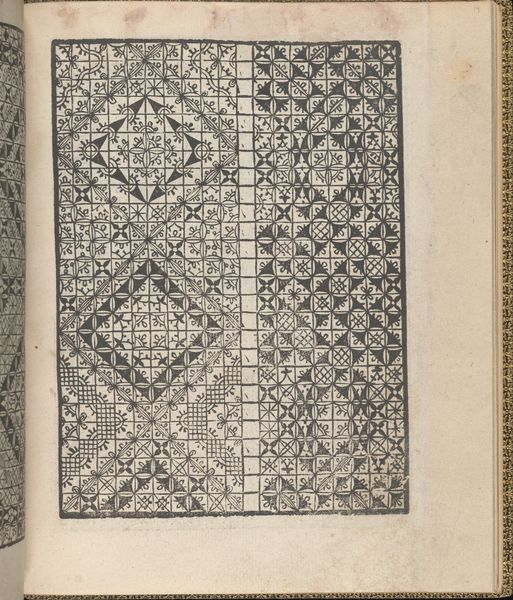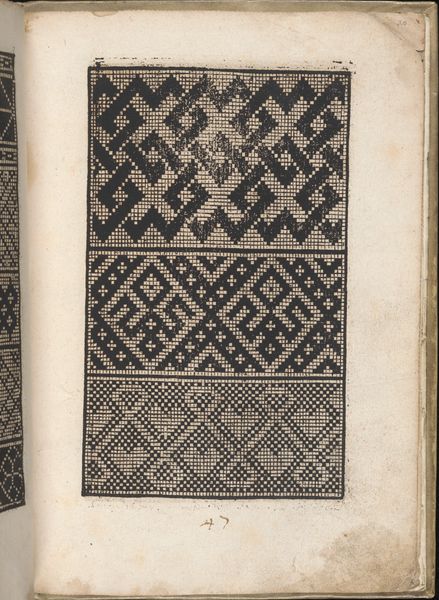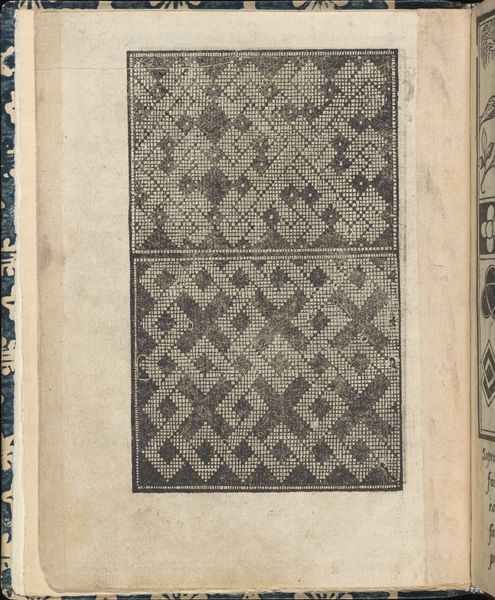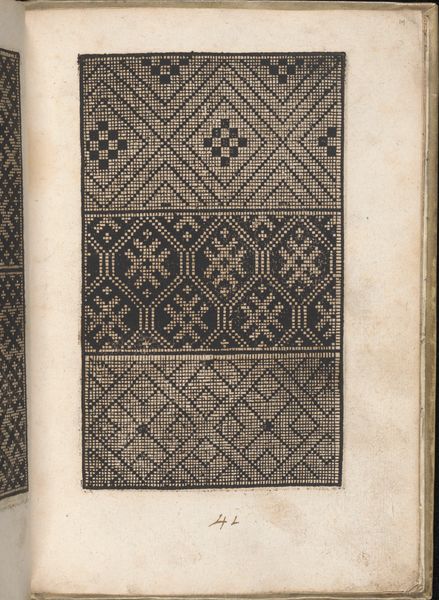
Ornamento delle belle & virtuose donne, page 16 (verso) 1554
0:00
0:00
drawing, graphic-art, ornament, print, paper
#
drawing
#
graphic-art
#
ornament
#
toned paper
#
homemade paper
#
ink paper printed
# print
#
book
#
sketch book
#
paper
#
personal sketchbook
Dimensions: Overall: 7 1/2 x 5 7/8 in. (19 x 15 cm)
Copyright: Public Domain
Curator: Here we have a look at "Ornamento delle belle & virtuose donne, page 16 (verso)" by Matteo Pagano, dating back to 1554. This print, found in the Metropolitan Museum of Art's collection, offers us a glimpse into the world of 16th-century ornamentation. Editor: Immediately, what strikes me is the incredibly dense, almost textile-like pattern. You can almost feel the repetitive motion required to produce something so intricate by hand. The material's presence is undeniable. Curator: Exactly! This work offers crucial insight into the cultural expectations placed on women of the time. The title translates to "Ornament for beautiful and virtuous women." This sketchbook literally patterns the ideals expected of women in society. Editor: Yes, it raises interesting questions about labor and production, doesn't it? Who made the paper? What kind of ink was used? And what was the division of labor involved in printing and distributing these patterns, making them commodities? Curator: It prompts us to reconsider art’s social function. Printed patterns like these democratized design. They allowed women from a broader social spectrum to create fashionable and appropriate garments or adornments, granting access, to an extent, to higher social echelons through adornment. Editor: And that act of democratizing is really where the power lies. Looking closer, I see imperfections—signs of wear, maybe inconsistencies in the ink. Those minor flaws are evidence of process, grounding it and highlighting labor and access to it. It's not just about a perfect image; it’s about material reality. Curator: Agreed. The drawing speaks to its time and audience. It embodies an intersection of gender, class, and the visual dissemination of norms. Editor: It also demonstrates that even simple means can yield complex, powerful, and potentially disruptive results. Curator: It really illustrates how something ostensibly decorative can tell us so much about the fabric of society at the time. Editor: Exactly. It really pulls you in with the materiality of patternmaking and consumption and keeps you interested because of its history and message.
Comments
No comments
Be the first to comment and join the conversation on the ultimate creative platform.
